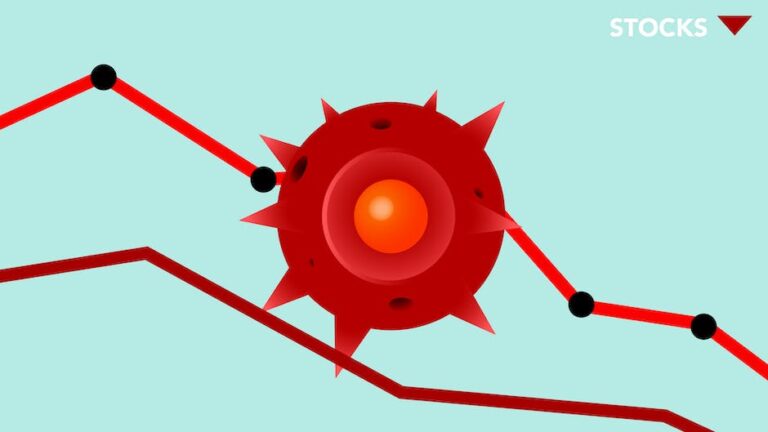Identifying Trend Reversals in the Stock Market
One of the most important concepts in trading the stock market is identifying trend reversals. A trend reversal occurs when the direction of a stock’s price changes from an uptrend to a downtrend or vice versa. Knowing when a reversal has occurred can be a profitable opportunity for traders.
Trend reversals can be triggered by various factors such as economic news and events, changes in market sentiment, or simply due to a natural correction in the market after a prolonged trend.
Successful traders understand the importance of being able to identify these reversals and capitalizing on them. However, it is also important to note that trend reversals can often be difficult to gauge accurately, and false signals can occur, leading to losses.
Understanding market psychology
Market psychology plays a significant role in trend reversals. It is the collective emotions and attitudes of traders and investors that influence market movements. Market psychology can often lead to irrational buying or selling behaviours.
The fear of missing out on profits can drive traders to hold onto losing positions, while at the same time, the fear of losing money can lead traders to sell prematurely before a reversal occurs. Greed can also play a factor, encouraging traders to hold onto positions for too long or enter trades prematurely.
Understanding market psychology and the behaviours that drive it can help traders to better identify trend reversals. By keeping a rational and objective mindset, traders can avoid impulsive decision-making based on emotions and instead rely on technical analysis and solid research.

Identifying reversal patterns
Reversal patterns are technical indicators that suggest a trend is about to change direction. There are many different reversal patterns, but the most commonly used ones include the head and shoulders pattern, double top/double bottom pattern, and the bullish/bearish engulfing pattern.
The head and shoulders pattern is a bearish reversal pattern, indicating that a stock’s price may be about to drop. It is characterized by three peaks, with the middle peak or head being the highest. The double top pattern is another bearish pattern that shows a stock’s price has reached a resistance level twice before reversing direction.
On the other hand, the bullish and bearish engulfing patterns are bullish and bearish reversal patterns, respectively. The bullish engulfing pattern occurs when a small red candle is followed by a larger green candle, indicating a trend reversal from bearish to bullish. The bearish engulfing pattern works the same way, showing a trend reversal from bullish to bearish.
Identifying reversal patterns can be a valuable tool in predicting and profiting from trend reversals. However, it is important to remember that no pattern is 100% accurate, and traders should use other technical indicators and analysis to confirm their decision-making.
Using technical indicators to confirm reversals
Technical indicators can help confirm trend reversals and provide traders with a more comprehensive analysis of the market. Some of the most commonly used technical indicators for confirming trend reversals include moving averages, Bollinger Bands, and the Relative Strength Index (RSI).
Moving averages are used to smooth out short-term fluctuations and help traders identify changes in long-term trends. When a stock’s price crosses above the moving average, it may indicate a bullish reversal, while crossing below could signal a bearish reversal.
Bollinger Bands are another popular technical indicator used to confirm trend reversals. They help traders identify periods of high volatility in a stock’s price and can provide signals about a change in trend direction.
The RSI is a momentum oscillator that measures the strength of a stock’s price action. When the RSI is above 70, it indicates an overbought condition. Conversely, an RSI below 30 suggests an oversold condition. Reversals can occur when the RSI crosses these levels in the opposite direction.
By using technical indicators to confirm trend reversals, traders can increase the accuracy of their trades and minimize potential losses.
When to enter a trend reversal trade
Identifying a trend reversal is only half of the battle; the other half is knowing when to enter a trade. Timing is crucial when trading the stock market, and entering a reversal trade too early or too late can lead to significant losses.
One strategy for entering a trend reversal trade is to wait for a confirmation signal, such as the formation of a reversal pattern or a crossover of a technical indicator. Another strategy is to wait for a break in a key level of support or resistance before entering a trade.
The decision to enter a reversal trade ultimately depends on the individual trader’s risk tolerance, trading style, and market analysis. Still, it is crucial to consider all available information and confirm the reversal before executing a trade.
Setting stop loss and take profit levels
Setting stop-loss and take-profit levels is essential when trading trend reversals. A stop-loss order is a predetermined price level at which a trader will exit a trade to minimize potential losses. A take-profit level is a price target at which a trader will exit a trade to lock-in profits.
In trend reversal trades, stop-loss orders should be placed below a key level of support or resistance to limit the potential downside. Take-profit levels can be set at a predetermined percentage or an important level of resistance or support.
Setting and adjusting stop-loss and take-profit levels requires careful consideration of market conditions and should be done with a solid understanding of risk management. Traders must remember that price movements can be unpredictable, and setting appropriate levels can make all the difference in the success of a trade.
Managing risk in trend reversals
Managing risk is crucial when trading trend reversals. While they can present profitable opportunities, trend reversals can also result in significant losses if traders do not manage risk effectively.
One way to manage risk in trend reversal trades is to use proper position sizing. This means entering trades with appropriate, predetermined trade sizes that reflect the individual trader’s risk tolerance and account size. Traders should also consider diversifying their portfolios to spread risk over various stocks and sectors.
Another way to manage risk is to have a clear understanding of leverage. Leverage can be a powerful tool when used correctly, but it can also amplify losses. Therefore, it is essential to use leverage carefully and not to overextend positions.
Finally, having a well-defined trading plan is critical for managing risk. A trading plan should outline entry and exit points, risk management strategies, and position sizing. Following a trading plan can help traders stick to their strategy and avoid impulsive decision-making based on emotions.

Conclusion and final tips
Identifying trend reversals can be a profitable opportunity for traders, but it requires a careful analysis of market conditions and proper risk management strategies.
Traders can use technical indicators to confirm trend reversals, enter trades at the right time, and use stop-loss and take-profit levels to manage risk effectively.
It is also important to keep an objective and rational mindset and avoid impulsive decision-making based on emotions. Successful traders must practice good risk management, including proper position sizing, diversification, and leverage.
Ultimately, trading trend reversals can be a valuable strategy for achieving financial success in the stock market. Although it requires careful planning and execution, it can lead to profitable opportunities for those willing to put in the effort.
To sum up, traders should rely on technical analysis, confirm reversal patterns, set predetermined entry and exit points, and practice proper risk management to make the most of trend reversals. By following these strategies and continually improving their trading skills, traders can achieve their financial goals and thrive in the world of stock market trading.







